A Walk Into Summer
The human world was a confusion of distressing news, so I went outside to check on nature
It’s six o’clock on a July morning in the mountains of North Carolina. I open the door and step outside to hear the birds filling the trees with their wake-up songs. In times like these, it’s a good idea to begin the day with a smile and a great sense of peace. The natural world is going on as it always has, all around us.
Outside, the humidity is 96 percent, so I don’t leave the door open too long. Last spring it was as low as 15 percent and we were running a humidifier in the house day and night. People living in the wildfire zone had come into town with as much as they could carry. We were all on edge until they were back home safely.
I’m trying to get used to these rapid, extreme ups and downs of change in our world today. I’m looking for what stays the same.
So, after breakfast, I put on my sunhat and walking shoes and head up the street to Carolina Lake. It’s still very early and all is quiet.
Geese live at the lake, swallows dive for bugs on the water, and ducks stop by on their way north or south. Once I saw eight white herons in a tree on the far shore. Sometimes a blue heron glides low to the ground across our backyard.
Today I have my phone in my pocket for photos, and a wildflower guide published in 1928. I see the flowers haven’t changed.
In May, the geese had complete possession of the gravel path across the dam, but now that their goslings are grown, I march right through their little group with confidence, which I try to demonstrate to them.
At the end of the dam, you can cross a bridge into the steep, dark woods, to go on around the lake.
Instead, I turn left, down the wooden steps away from the lake. It’s cool and damp down here, and the path is soft with moss and fallen leaves.
Today I’m walking more to observe than to exercise, so I notice the woodland flower display isn’t quite over. I take out my camera.
Have you ever taken a step on such soil and suddenly patches of lovely pale blue flutter up from the ground? When these little Spring (or Echo) Azure butterflies land again, they fold their wings and almost disappear. Not a sound!
I think the sound of a brook in the woods must have always felt soothing to people. While you stand listening, you begin to notice the wildlife whose world this really is.
Imagine in July wishing for long-gone spring blossoms and coming across this showy, flighty hibiscus.
And more, with Parsons’ note about flower folklore:
I found a single little White Avens blooming. Here’s what Parsons says about it in her guide:
On the way home there is one small bridge to cross, where the creek narrows and minnows gather. Then a short path through briars and now-green forsythia brings me out onto open, mown lawns, and finally to an alley of evergreens.
Later at home, I sit on the porch and read Frances Parsons’ Introductory Chapter in How to Know the Wild Flowers. She writes,
At our feet lie wonders for whose elucidation a lifetime would be far too short. Yet if we study the mysteries of the flowers, and, when daunted, seek their interpretation in those students who have made this task part of their life-work, we may attain insight into those charmed lives which find “tongues in trees, books in the running brooks, sermons in stones, and good in everything.”
I look up from my book into the yard, and think, “To me, it’s not such a mystery if you can linger in nature’s world and let your spirit connect.”
In a few hours the fireflies will be out.



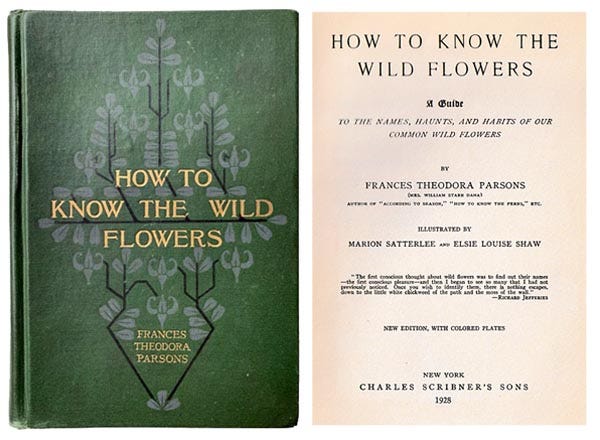



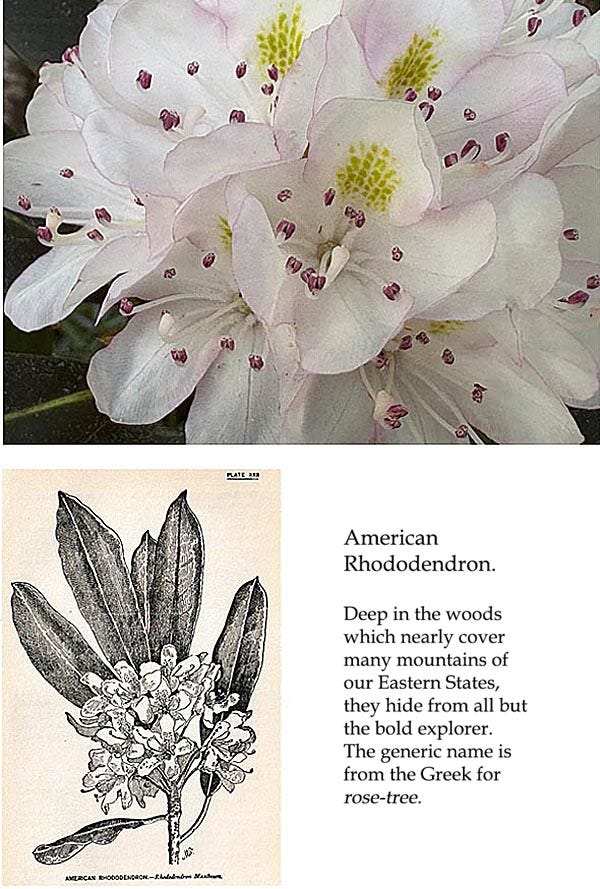
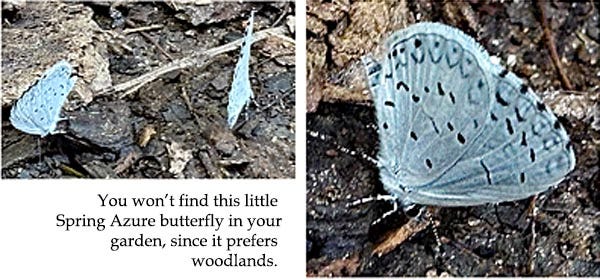
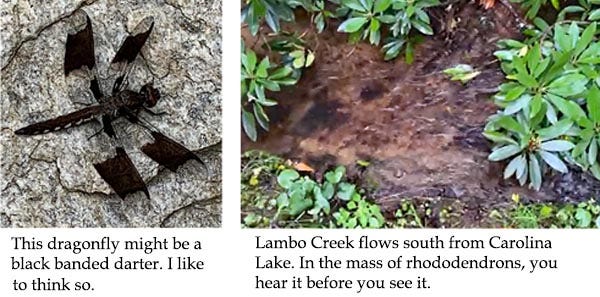
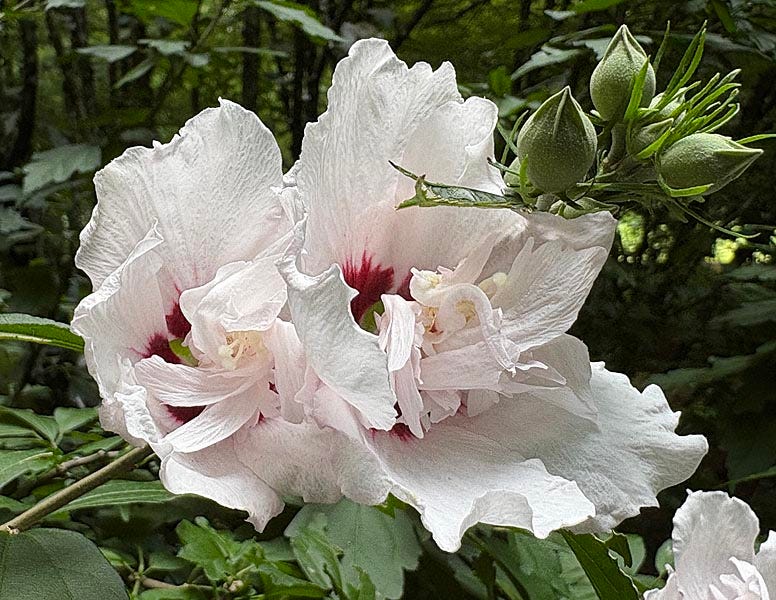
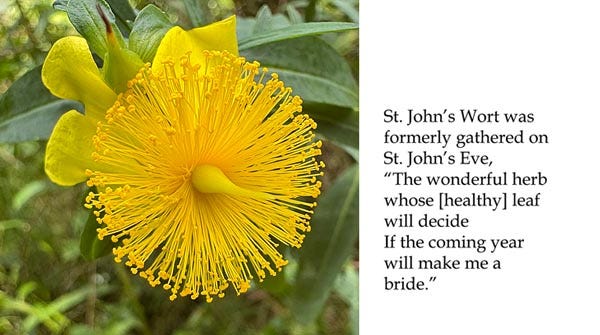

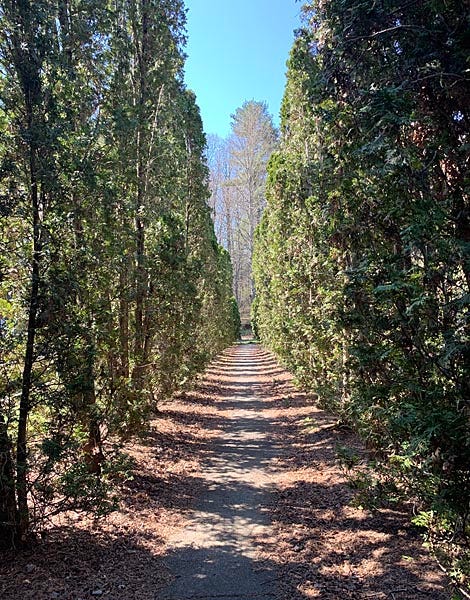
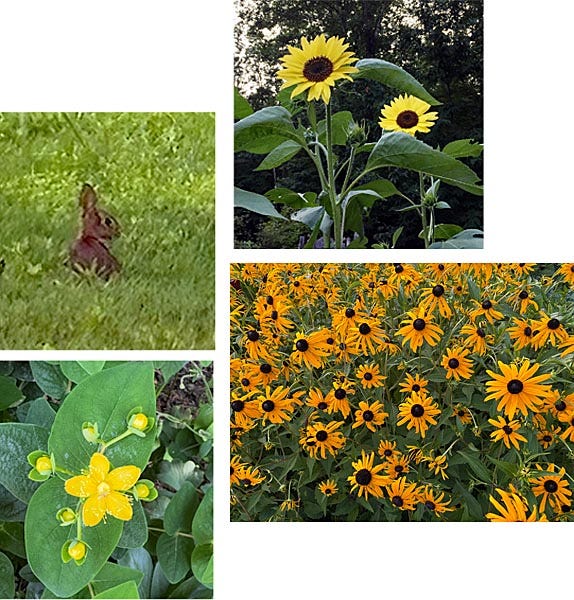
Lovely, Deda. Thank you.
What a lovely lovely post today, Deda!! Many thanks for your outstanding photos!
We also enjoyed nature this morning as we watered our jasmine..a little bumble bee was visiting the surrounding begonias. :)
Did you see the beautiful rainbow last evening over Brevard?